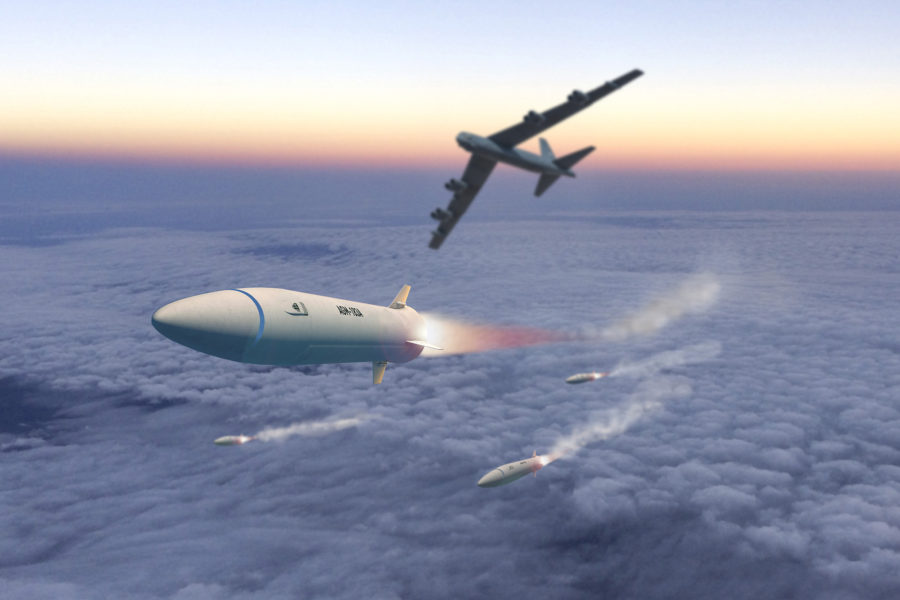The second all-up flight of the AGM-183A Air-Launched Rapid Response Weapon on March 13 fell short of a fully successful test, but the Air Force isn’t saying what went wrong with the Lockheed Martin-built hypersonic missile. The defense giant’s Missiles and Fire Control division recently said the ARRW is “ready to go” into production at scale.
A B-52H bomber of the 412th Test Wing launched the ARRW on its second “All-Up-Round” test off the southern California coast, the Air Force said March 24. The goal was to assess its “end-to-end performance” from captive carry through launch, booster ignition, shroud separation, and hypersonic body glide to impact. “Hypersonic” describes a vehicle that can fly at more than five times the speed of sound.
“The test met several of the objectives,” the Air Force said, “and ARRW team engineers and testers are collecting data for further analysis.” The Air Force declined to provide further details, citing operational security.
The ARRW flew what was described as a successful test on Dec. 9, 2022, the third in a row after a series of failures. The December test was “the first launch of a full prototype operational missile” in the program, the 86th Test Wing at Eglin Air Force Base, Fla. said in announcing the event. That missile completed the test and “detonated in the target area.”
In its fiscal 2024 budget request, the Air Force said it would “complete rapid prototyping and flight testing” of ARRW this year and asked for $150.3 million for the effort. The fiscal 2022 and fiscal 2023 amounts were $308.08 million and $114.98 million, respectively.
Several more all-up tests are planned. The additional shots will allow the Air Force to “collect valuable data, build capacity and capability, allow hypersonics programs to leverage and build upon each other, and project the overall technology forward,” the service said in its budget request. Other activities planned in 2024 include “complete contract closeout, finalize documentation and analysis, and activities to support the leave-behind capability.”
The “leave-behind” capability comprises an undisclosed number of production-representative weapons that could be used for further research or in combat.
Congress cut $161 million from ARRW in 2022, citing program delays and test failures.
Jay Pitman, Lockheed Martin Missiles and Fire Control vice president for air dominance and strike weapons, told reporters at the AFA Warfare Symposium on March 7 that “we believe we are ready to go … and to support production should that decision be made.” Pitman said Lockheed has demonstrated to the Air Force that it can produce the ARRW “at scale” with the “potential to do dozens upon dozens of these on a yearly basis.” Lockheed has established a hypersonics product production facility in Courtland, Ala and is working on several hypersonic programs for the Air Force, Army, and Navy.
“Behind the scenes, we’re doing what any development program would do,” Pitman said. “We’re going through qualification testing of our subsystems. We’re going through formal Production Readiness Reviews with the US government team.” Pitman added 26 of 27 of those reviews are complete.
Pitman asserted that his team is “on the cusp of delivery of an operational capability that can be rapidly deployed to the men and women in uniform.”
The air-to-ground AGM-183 ARRW is meant to “enable the U.S. to hold fixed, high-value, time-sensitive targets at risk in contested environments,” the Air Force said.
